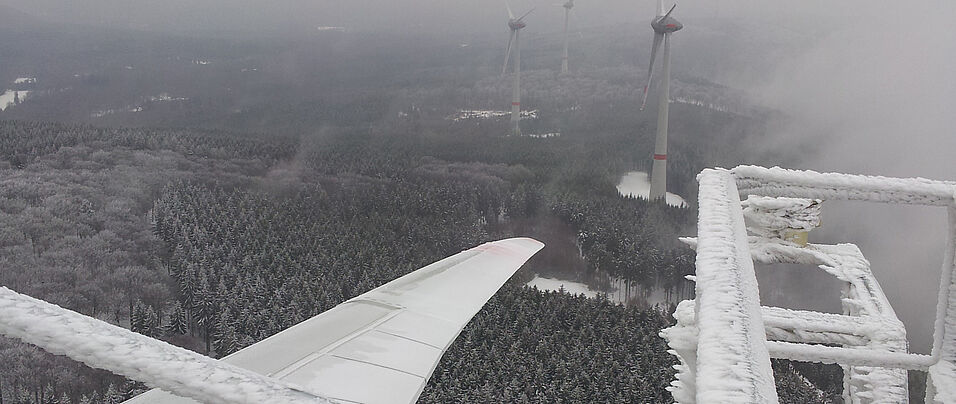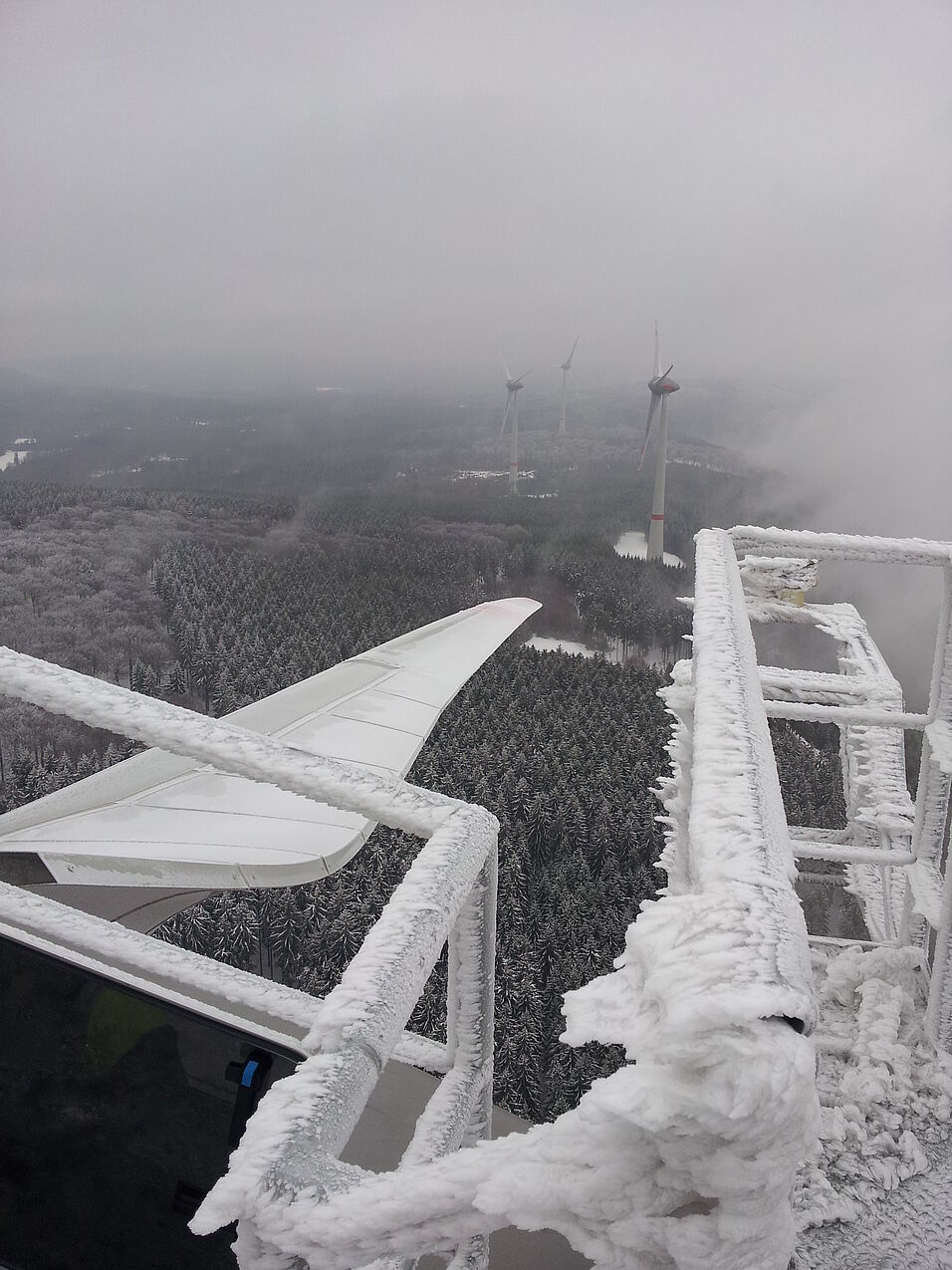Fog and low stratus in combination with temperatures below zero degree Celsius and wind constitute a threat to wind turbines. They trigger icing events at the blades that often result in a complete shutdown of the wind farm, ultimately leading to high economic costs. “Icing events cause energy yield losses that have to be compensated elsewhere”, says meteorologist Manfred Dorninger. Specific heating systems can avoid icing of the turbines, but blade heating is highly dependent on precise forecasts of the ambient temperature and icing probabilities in order to be cost-efficient.
The project “ICE CONTROL” aims at improving icing forecasts for a better management of wind farms in winter. The FFG project is funded by Austria’s “Klima- und Energiefonds“, and led by ZAMG (Zentralanstalt für Meteorologie und Geodynamik). It involves the Department for Meteorology and Geophysics of the University of Vienna as well as two companies.
Minimising uncertainties
„Icing forecasts are produced by a model chain”, explains scientist Manfred Dorninger. This model chain starts with a meteorological model, which is fed with weather data. The forecasts produced by the meteorological model serve as input data for the subsequent icing model, which calculates ice accumulation on an object. A third model describes yield losses of the wind farm.
“Each element of the model chain is affected by uncertainties of different and changing scale. We want to quantify these uncertainties by targeted variation of the input data and model settings and by comparing the results with the standard result”, says Dorninger. The variation of input data and model settings is conducted about 50 times, resulting in an ensemble of forecasts. Based on this ensemble approach, the researchers can quantify the uncertainties. Knowledge about the uncertainties can be integrated in a cost-lost model at later stage that allows an improved farm operation management. The overall goal of “ICE CONTROL” is to deliver preparatory work for implementing such an innovative cost-loss model.
Estimated yield losses
In Austria icing events at wind turbines that actually cause farm shutdowns occur regularly in medium and high mountain areas (from 600 to 1,500 meters altitude). About 15 per cent of Austria’s wind farms have to deal with frequent icing. Studies have also shown that medium icing events last about three to 15 days every year in the North-eastern parts of Austria, depending on altitude.
“In order to meet future climate change targets, we will see more farms arising in the alpine and pre-alpine landscapes”, says Manfred Dorninger, “therefore increased energy yield losses due to icing events will become more important in Austria, triggering the demand for precise icing forecasts.”
The FFG project “ICE CONTROL” is funded by Austria’s “Klima- und Energiefonds” und runs from April 2016 to March 2019. The project consortium exists of the following partners: ZAMG (project coordinator), the Department of Meteorology and Geophysics of the University of Vienna, VERBUND Hydro Power GmbH, and the Swiss company Meteotest.
Contact person:
Ass.-Prof. Mag. Dr. Manfred Dorninger
Department of Meteorology and Geophysics, University of Vienna
E-Mail: manfred.dorninger@univie.ac.at
Tel.: +43-1-4277-537 31


